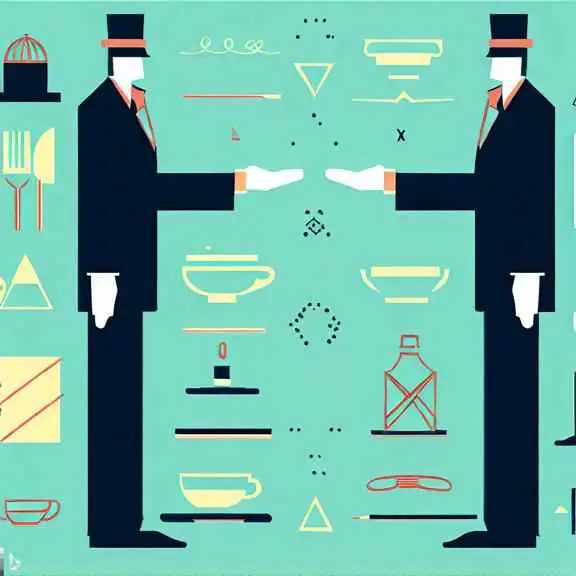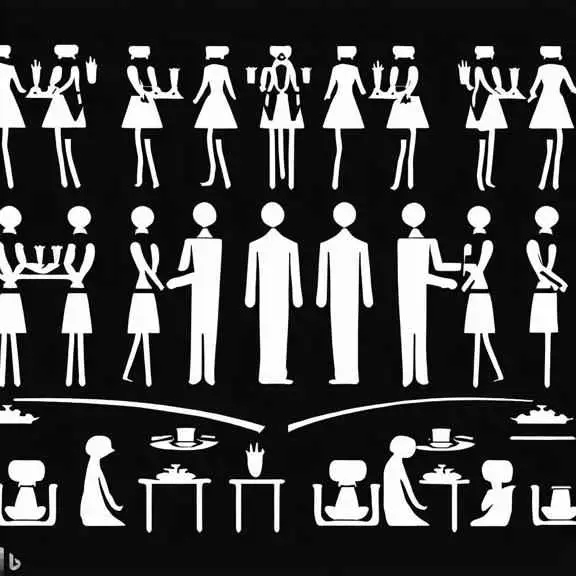Paragraph on
Etiquette And Manners
for all Class, Words
by Society on
Etiquette and manners are essential in our daily lives, whether we are at home or in a public setting. Simply put, etiquette is the code of…, please continue reading.

Table of Content
Ad
The Paragraph on Etiquette And Manners
Ad
Etiquette and manners are essential in our daily lives, whether we are at home or in a public setting. Simply put, etiquette is the code of behavior for individuals in a particular setting or situation, while manners refer to how we behave towards others. Together, they help create a positive and comfortable environment for everyone, especially in social situations.
One of the essential aspects of etiquette and manners is communication. Effective communication is the key to developing and maintaining relationships, whether they are personal or professional. When communicating with others, it is important to listen actively, respond appropriately, and avoid interrupting.
Another important aspect of etiquette and manners is table manners. Dining etiquette is an integral part of socializing, and knowing how to behave at the table can leave a lasting impression on others. Rules like placing your napkin on your lap, using utensils appropriately, and avoiding making loud noises while eating, all contribute to creating a pleasant dining experience.
Furthermore, greeting and introducing others is a crucial part of etiquette and manners. When meeting someone for the first time, it is appropriate to introduce yourself and offer a handshake. This simple gesture can go a long way in creating a positive first impression. When introducing others, it is essential to provide their name and offer a few details about them to help start a conversation.
In conclusion, etiquette and manners are crucial in creating positive social interactions. Good manners ensure that we respect others, create a good impression, and establish lasting relationships. By practicing good etiquette, we also show our appreciation for cultural differences and create a harmonious environment.

Questions about Etiquette And Manners
Ad
Questions:
- What is the difference between etiquette and manners?
- Why is effective communication important in practicing etiquette and manners?
- What are table manners?
- What is the importance of table manners?
- How can greeting others create a positive first impression?
- What do we need to consider when introducing others?
- How can we show our respect for cultural differences when practicing etiquette?
- Why is practicing good etiquette important in social interactions?
- Can good manners establish long-lasting relationships?
- What values can we learn from practicing good etiquette and manners?

Vocabulary related to Etiquette And Manners
Ad
Vocabulary list:
- Etiquette - the code of behavior observed in a society or social group
Usage - Knowing the right etiquette at the dinner table can make the dining experience more pleasant.
Synonyms - protocol, decorum, propriety
Antonyms - informality, rudeness, misbehavior
- Manners - social behavior observed in interactions with others
Usage - Good manners are essential in creating a positive social environment.
Synonyms - behavior, conduct, etiquette
Antonyms - impoliteness, discourteousness, rudeness
- Communication - the process of exchanging information or ideas
Usage - Effective communication skills are important in developing relationships.
Synonyms - interaction, correspondence, dialogue
Antonyms - misunderstanding, miscommunication, silence
- Active listening - fully concentrating on and understanding what the other person is saying
Usage - Active listening is an important aspect of effective communication.
Synonyms - attentive listening, engaged listening, focused listening
Antonyms - inattentive listening, disconnected listening, absent listening
- Dining etiquette - the code of behavior observed in formal dining situations
Usage - Table manners are an essential part of dining etiquette.
Synonyms - table manners, proper dining behavior, formal dining etiquette
Antonyms - informal dining, casual dining, improper table behavior
- Handshake - a gesture of goodwill and greeting
Usage - A handshake is a common way of greeting others.
Synonyms - handgrip, grip, clasp
Antonyms - no greeting, hug
- Introduction - the act of acquainting someone with another person or group
Usage - A proper introduction can help start a conversation with others.
Synonyms - presentation, introduction ceremony, opening
Antonyms - no introduction, not acquainted
- Respect - a feeling of admiration for someone due to their qualities or achievements
Usage - Respecting cultural differences helps create a harmonious social environment.
Synonyms - admiration, esteem, appreciation
Antonyms - disrespect, contempt, disdain
- Harmony - a pleasing arrangement of parts to create a unified effect
Usage - Practicing good etiquette creates harmony in social interactions.
Synonyms - agreement, unity, concord
Antonyms - discord, conflict, disagreement
- Values - principles or standards held by a person or group
Usage - Practicing good etiquette teaches us the values of respect, communication, and consideration.
Synonyms - principles, standards, morals
Antonyms - immorality, unethical behavior, disregard

Structure of the sample "Etiquette And Manners" paragraph
Ad
Cohesion and coherence: The paragraph’s structure is well-organized, with each sentence building on the previous ones. The topic sentence introduces the topic while the supporting sentences provide examples and explanation, each linked logically to the previous. The paragraph’s ideas are linked through the use of transition phrases such as “furthermore,” “in conclusion,” etc. Moreover, the paragraph uses parallel sentence structure, partial repetition, and rhetorical questions to enhance its coherence. All these elements contribute to making the paragraph cohesive and coherent.
